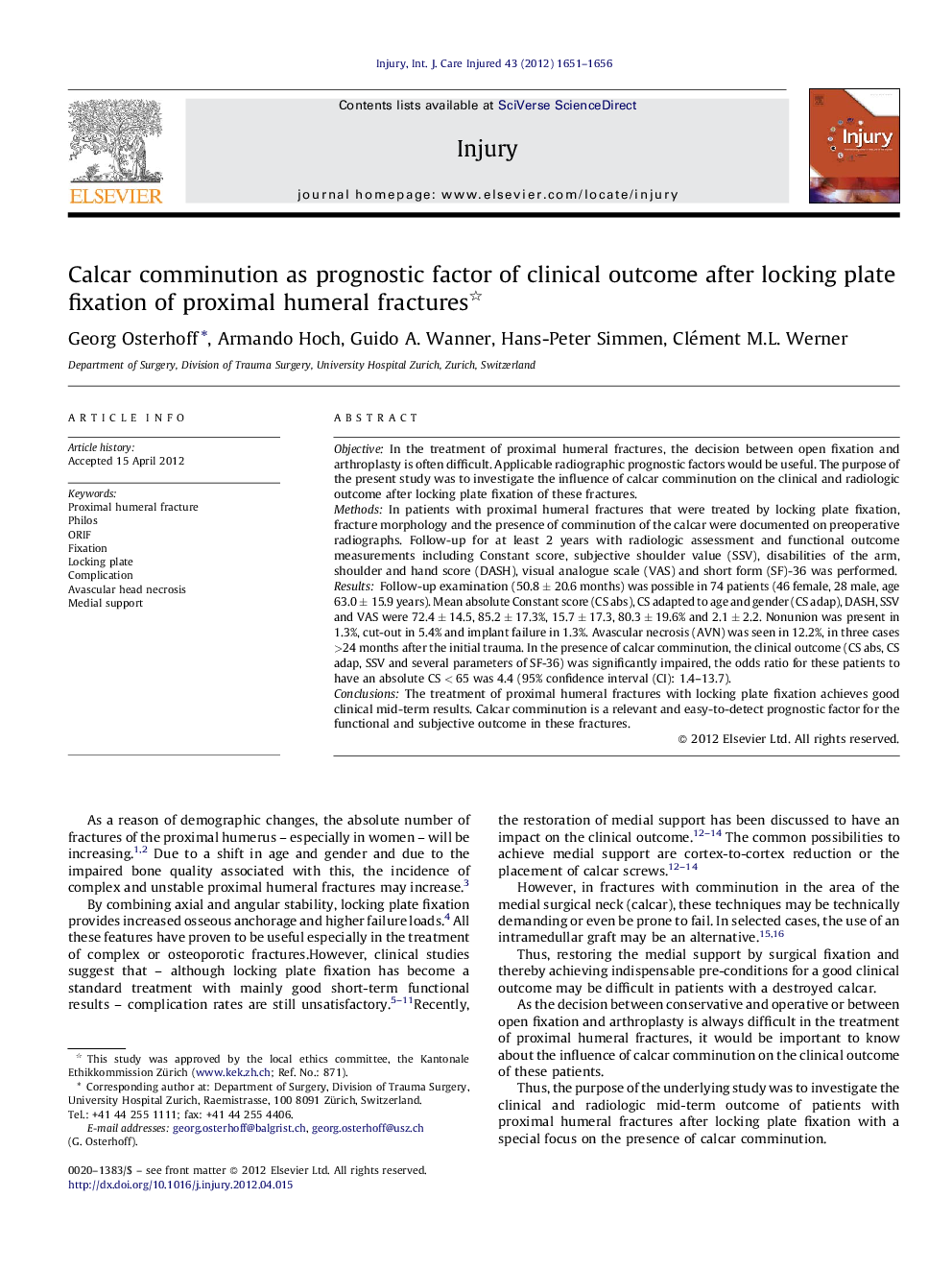| Article ID | Journal | Published Year | Pages | File Type |
|---|---|---|---|---|
| 3240311 | Injury | 2012 | 6 Pages |
ObjectiveIn the treatment of proximal humeral fractures, the decision between open fixation and arthroplasty is often difficult. Applicable radiographic prognostic factors would be useful. The purpose of the present study was to investigate the influence of calcar comminution on the clinical and radiologic outcome after locking plate fixation of these fractures.MethodsIn patients with proximal humeral fractures that were treated by locking plate fixation, fracture morphology and the presence of comminution of the calcar were documented on preoperative radiographs. Follow-up for at least 2 years with radiologic assessment and functional outcome measurements including Constant score, subjective shoulder value (SSV), disabilities of the arm, shoulder and hand score (DASH), visual analogue scale (VAS) and short form (SF)-36 was performed.ResultsFollow-up examination (50.8 ± 20.6 months) was possible in 74 patients (46 female, 28 male, age 63.0 ± 15.9 years). Mean absolute Constant score (CS abs), CS adapted to age and gender (CS adap), DASH, SSV and VAS were 72.4 ± 14.5, 85.2 ± 17.3%, 15.7 ± 17.3, 80.3 ± 19.6% and 2.1 ± 2.2. Nonunion was present in 1.3%, cut-out in 5.4% and implant failure in 1.3%. Avascular necrosis (AVN) was seen in 12.2%, in three cases >24 months after the initial trauma. In the presence of calcar comminution, the clinical outcome (CS abs, CS adap, SSV and several parameters of SF-36) was significantly impaired, the odds ratio for these patients to have an absolute CS < 65 was 4.4 (95% confidence interval (CI): 1.4–13.7).ConclusionsThe treatment of proximal humeral fractures with locking plate fixation achieves good clinical mid-term results. Calcar comminution is a relevant and easy-to-detect prognostic factor for the functional and subjective outcome in these fractures.
